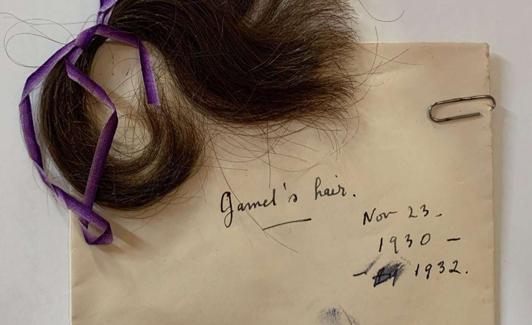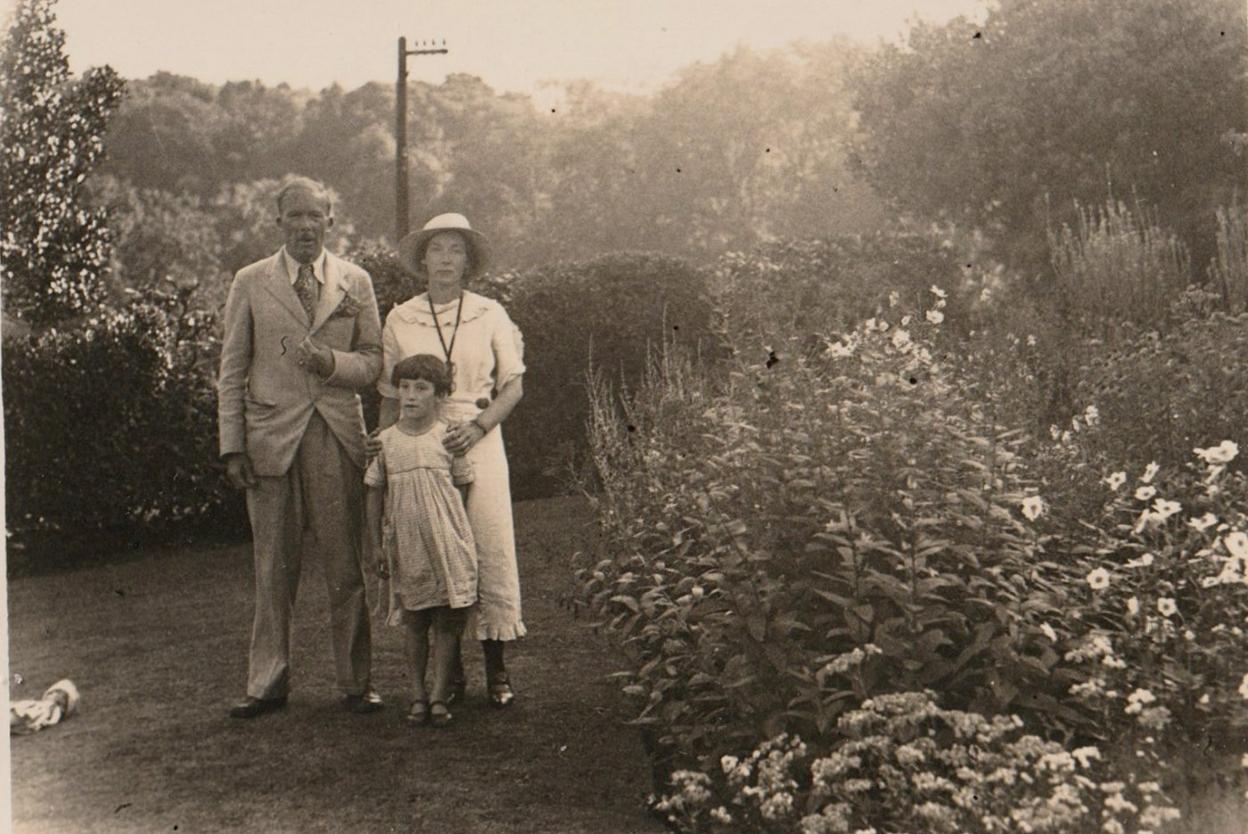When Brenan met Gamel: the love letters that tell their story
It begins with an invitation to tea and ends with a lock of hair which she sends with a poem dedicated to him. A new book reveals how their romance began and evolved
SUR
MALAGA.
Friday, 11 November 2022, 10:46
"Dear Miss Woolsey: I wonder if you would like to come and have tea with me one afternoon. Tomorrow, for example?" Those were the first words that Gerald Brenan wrote to Gamel Woolsey after meeting her one day in 1930 at the house of the Powys family in Dorset.
He was formal and impatient. She was restrained and rather reticent: "Will you forgive me if I do not come on our excursion this afternoon? I am so very tired from the full-day one yesterday," she wrote one day.
Those were the first steps in their courtship, the start of a love story that would last nearly 40 years, until Gamel's death. Epistolario Íntimo, from the collection La Vie en Rose, published by Jákara, reveals in two volumes the early correspondence between the couple, an epistolary romance which evolved from initial coolness to absolute devotion. The book launch was held at the Casa Gerald Brenan in Churriana last week.
Epistolario Íntimo disproves the hypothesis of those who claim that theirs was a marriage of convenience.
"These letters show a different perspective. There was a sincere, real love between them," says Carlos Pranger, their literary executor, who selected and translated the letters into Spanish. They both kept the letters they received from each other. Brenan even kept a lock of Gamel's hair, tied with a violet ribbon, which she had sent him with a poem written for him just before they began to live together.
Those verses from Microcosms are included in the books and show the passion they felt for each other: "And know that you will come to bed/before the midnight cock has crowed/ however far in thought you fared/I am the ending of your road," she wrote.
But it had not been easy at the start. Brenan, who was 36 at the time, was in too much of a hurry. He was desperate to find love. And Gamel became defensive because she was going through a turbulent time in her life. The poet, after separating from her first husband in New York, was involved in a type of love triangle with Llewelyn Powys and his wife Alyse in England. "Alyse was a committed feminist and allowed this triangle to happen, and in a way she also fell in love with Gamel," Pranger explains. In fact the three were living together when Brenan met Gamel. She had even become pregnant by Llewelyn but lost the baby after an accident.
All this meant that she, at the age of 35, put up her barriers and doubted the author's intentions. "They had both been damaged emotionally by their previous love affairs," says Pranger. Brenan was longing for a stable relationship after a stormy one with painter Dora Carrington and he was suffering because he had not found one. There is a moment when Gamel Woolsey is distant towards him and he talked of the misery she was putting him through.
Feelings of love, expressed
But after months of invitations, walks, excursions and afternoon teas in Dorset, Gamel fell in love with Brenan. And they both set out their feelings in writing.
"Oh, darling, if you knew how deeply, how profoundly, you have changed the current of my life. The waters that, forced by the cruel tide, have been sailing upstream against the current, today flow back, liberated and satisfied, towards the sea. In loving you, I am not only more me but better than myself (...) Since I began to love you, oh, Gamel, every cell of my body, every atom of thought, every feeling has been reborn. It is a religious conversion and you are the saint I adore, through whom I question all my opinions and reflections, and in whom all my feelings and impressions are satiated and vivified," he wrote to her.
And she opened her heart to him completely:"I think of you a great deal. It is as if you were an inhabitant of my mind - constantly you appear in my thoughts. Even when I think I am thinking of something else, I am and of you, as if you were in the room with me. It is a strange feeling. It is because I love you very much. Because I am in love," she said.
The couple married in 1931, a year and a half after they met, and they were not separated until 18 January 1968, the day on which Gamel Woolsey died.

The letter from Brenan that changed Cabra de Luna
Una Carta (meaning A Letter) is the title that José Manuel Cabra de Luna has given to the text which opens the third volume of Epistolario Intimo' . Nothing else. Because it was that, a single letter, which turned his creative process upside down and changed his vision of his own poetry.
It was 1978 and the painter and poet had just published De los que Frecuentan las Alturas, seven poems published by Rafael León with birds as a poetic element, in the manner of Nobel Prize winner Saint-John Perse. Rafael León gave him a list of people to whom a copy should be sent, and Gerald Brenan was one of them.His reaction came immediately, by post. "He said he had liked it very much, and added did you know that San Juan de la Cruz wrote a book about the characteristics of a solitary bird?", the poet says.
And no, he hadn't known that. He had read a lot of Spanish mysticism but that detail had escaped him. "So I turned to what San Juan had said about the greater bird, the bird as pure symbolism of the spirit," he said. He followed the path that Brenan had indicated and rewrote the book with more than 20 poems impregnated with the vision of the Renaissance poet.
"It's lovely how one letter can change the way you think of something. That letter completely changed my book," Cabra de Luna says. The impact of Brenan's words on his creation and the letter itself are included in the book with a facsimile of De los que Frecuentan las Alturas (including a drawing by Dámaso Ruano)and the final collection of poems.
